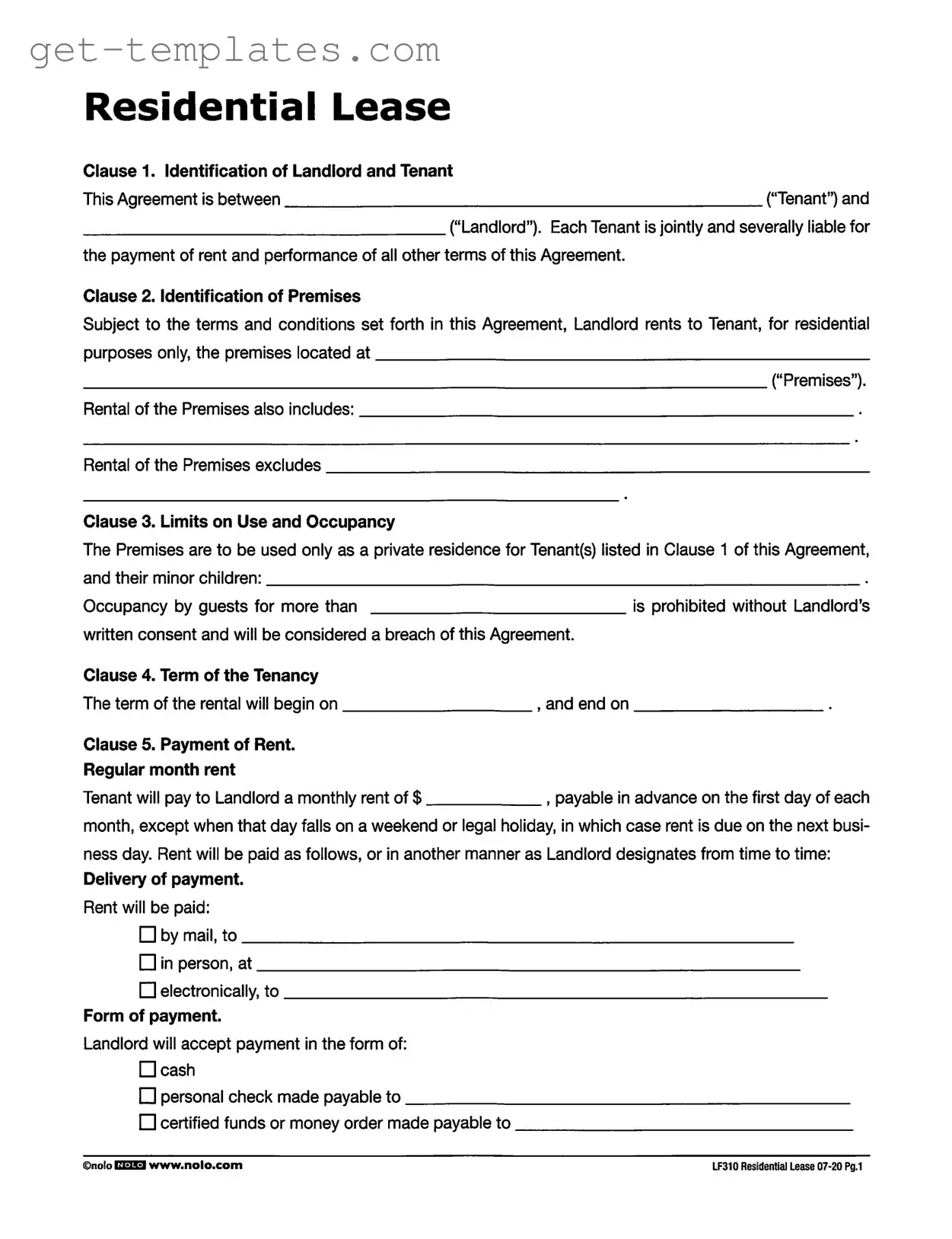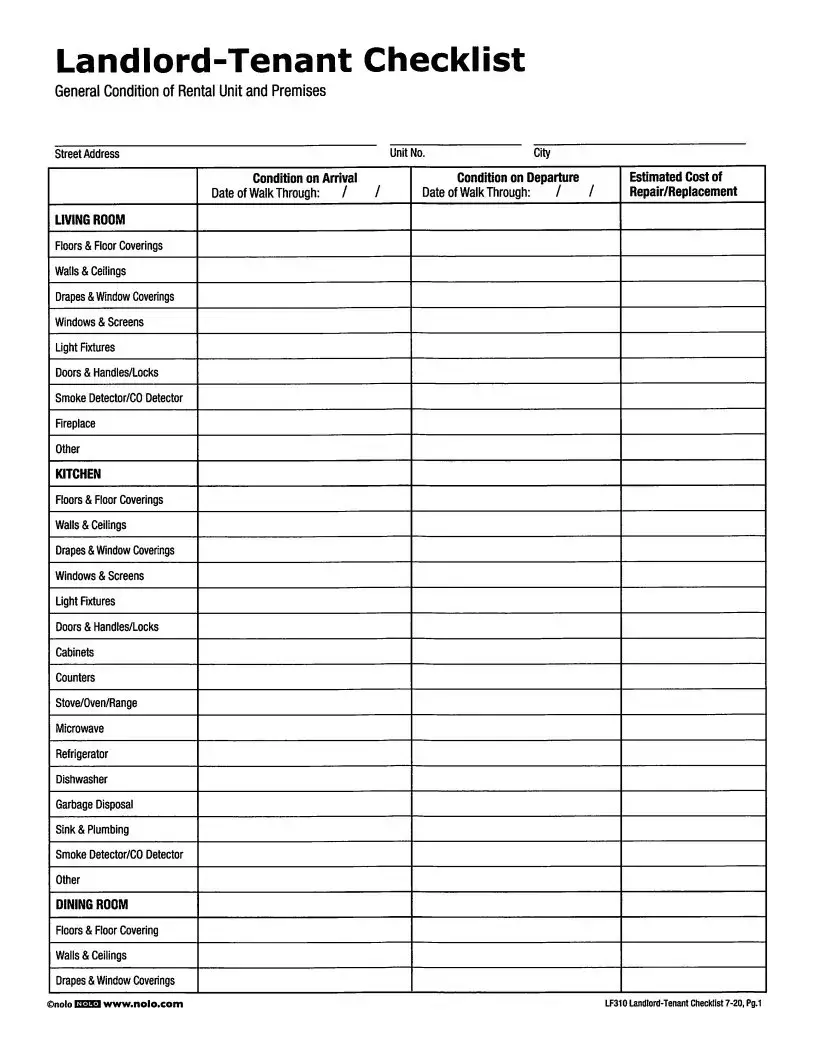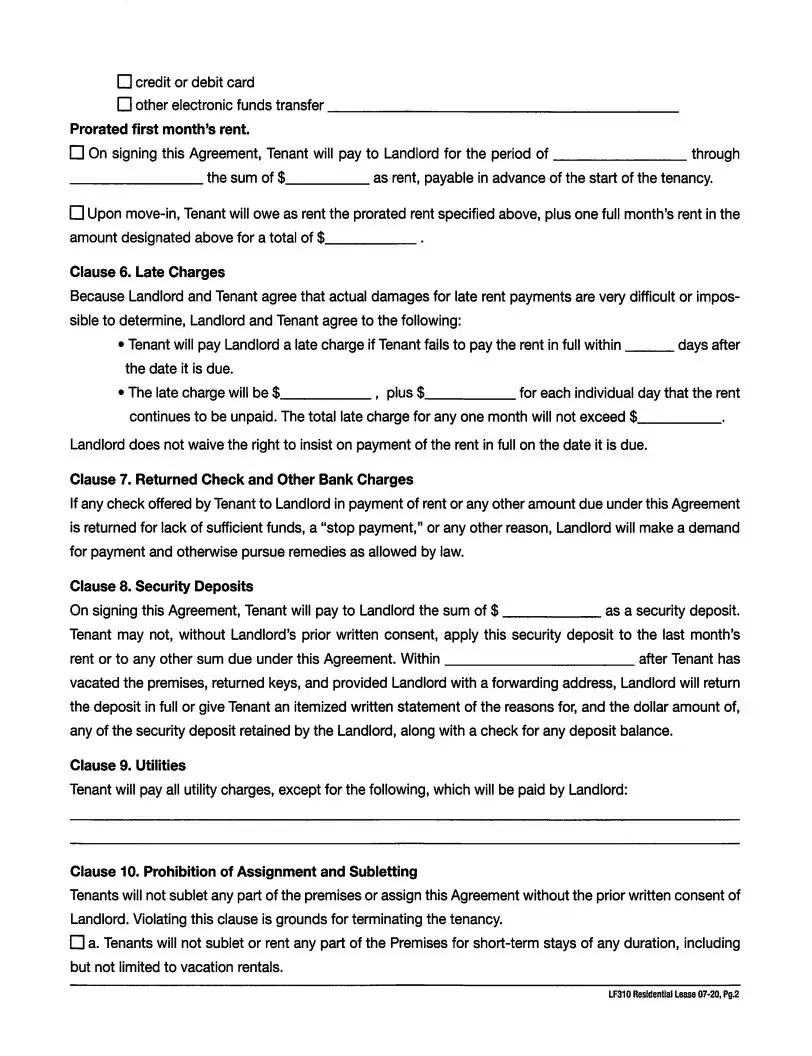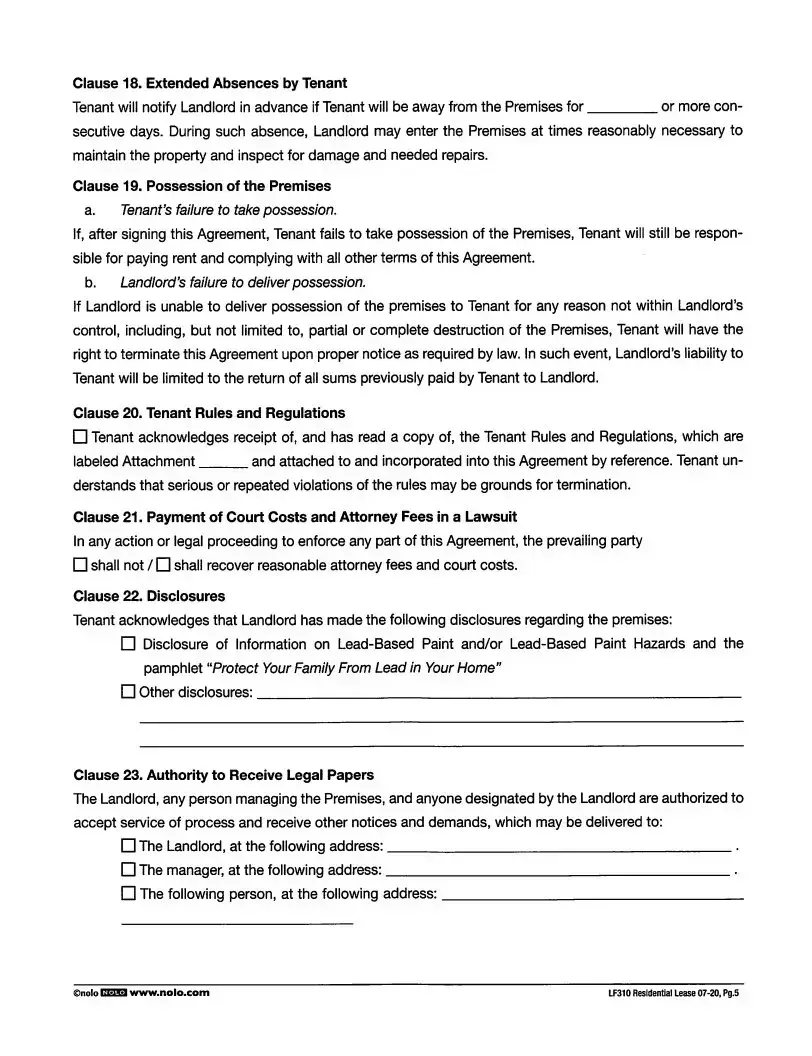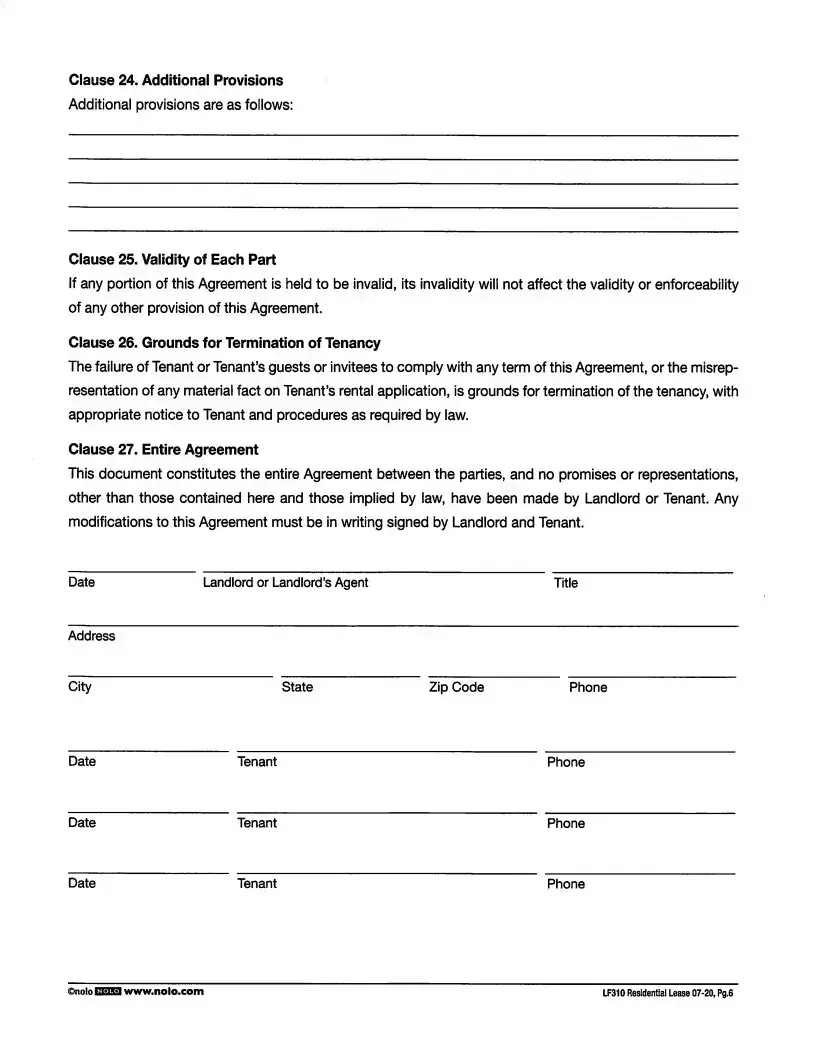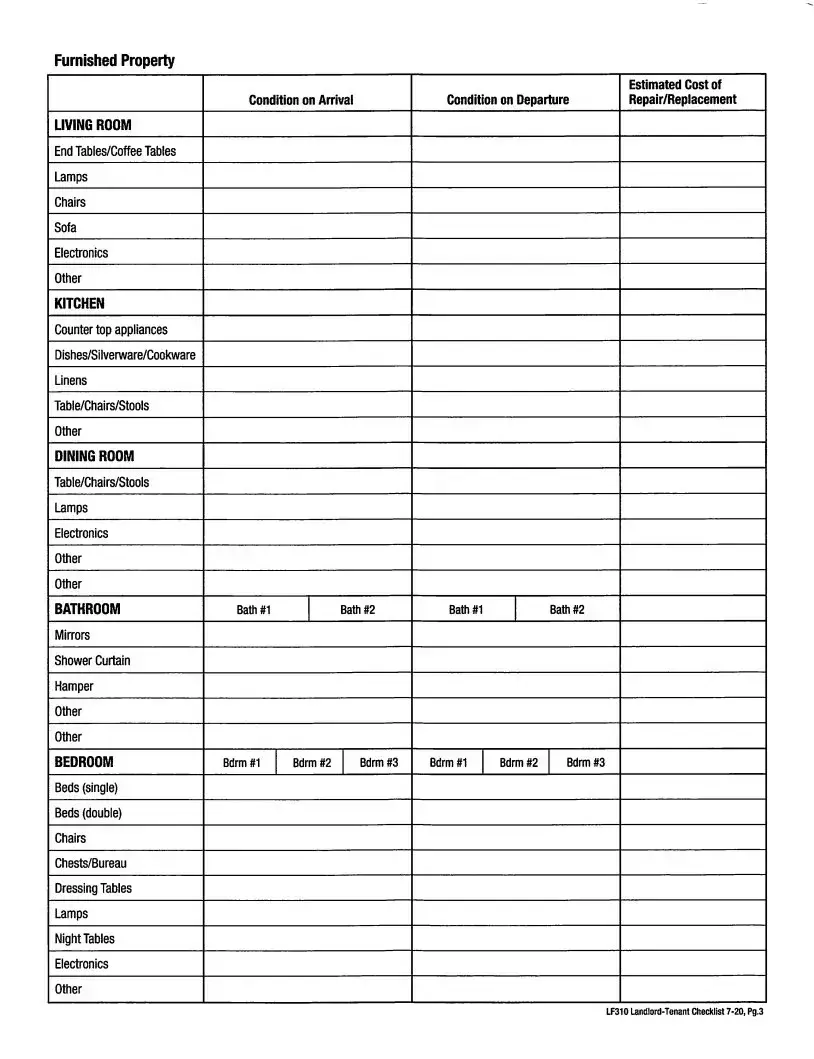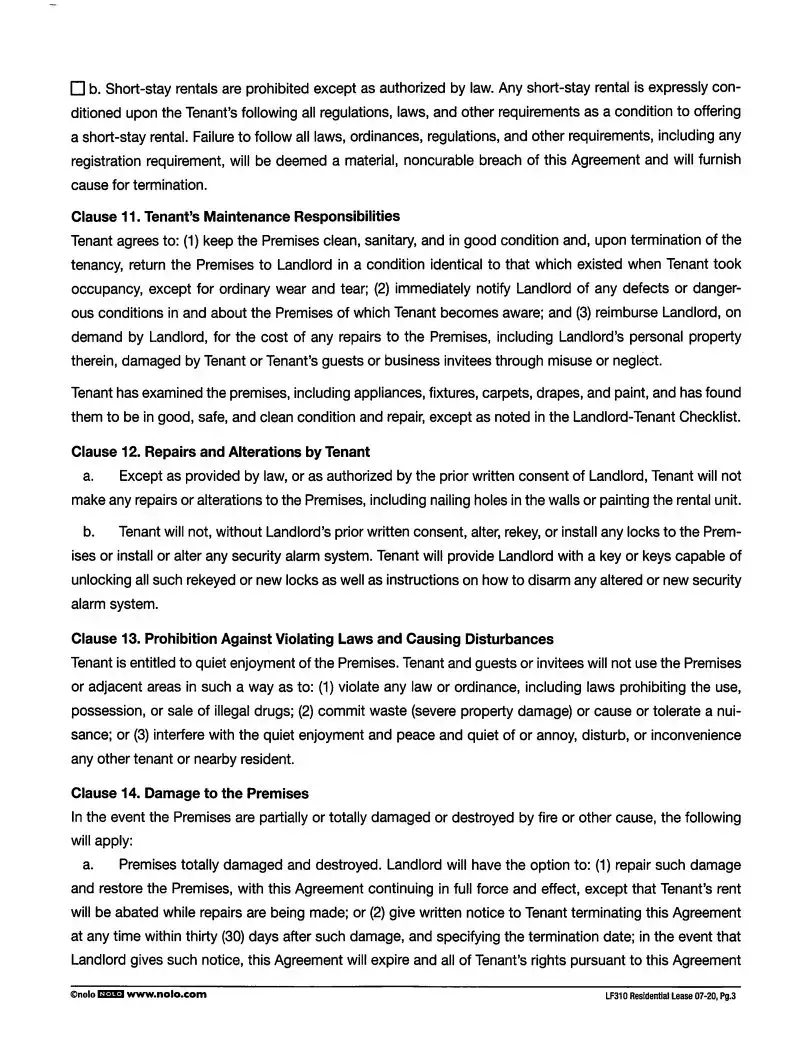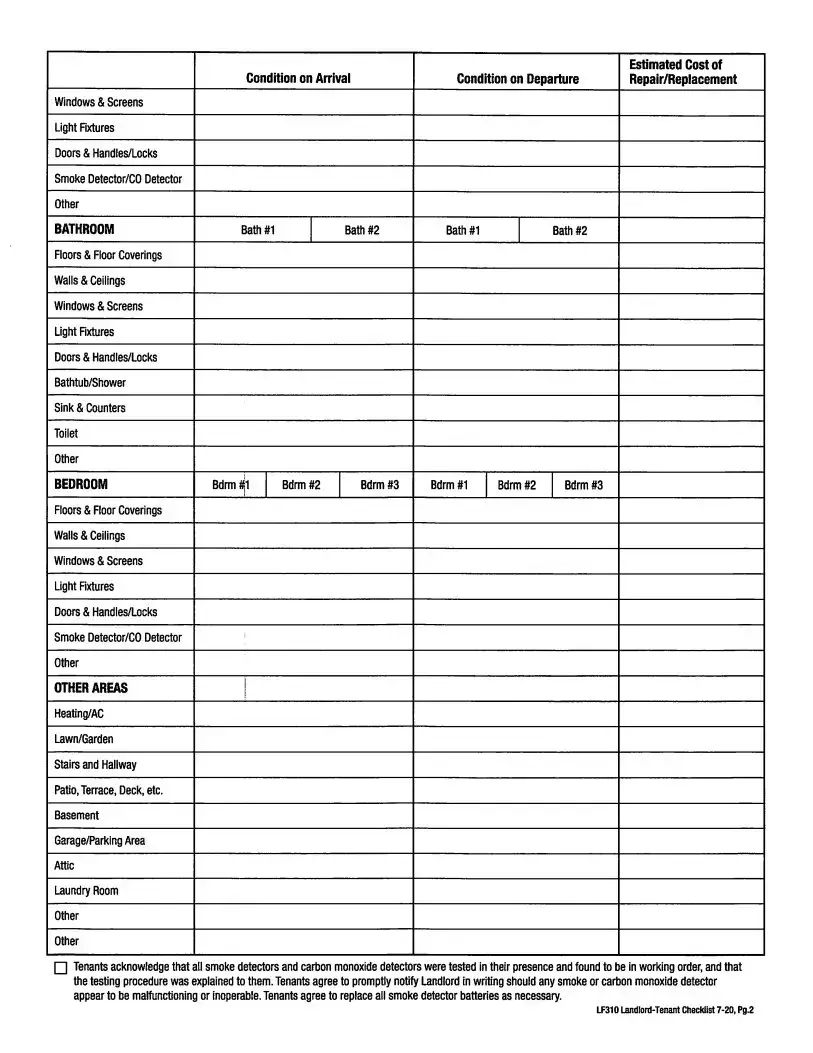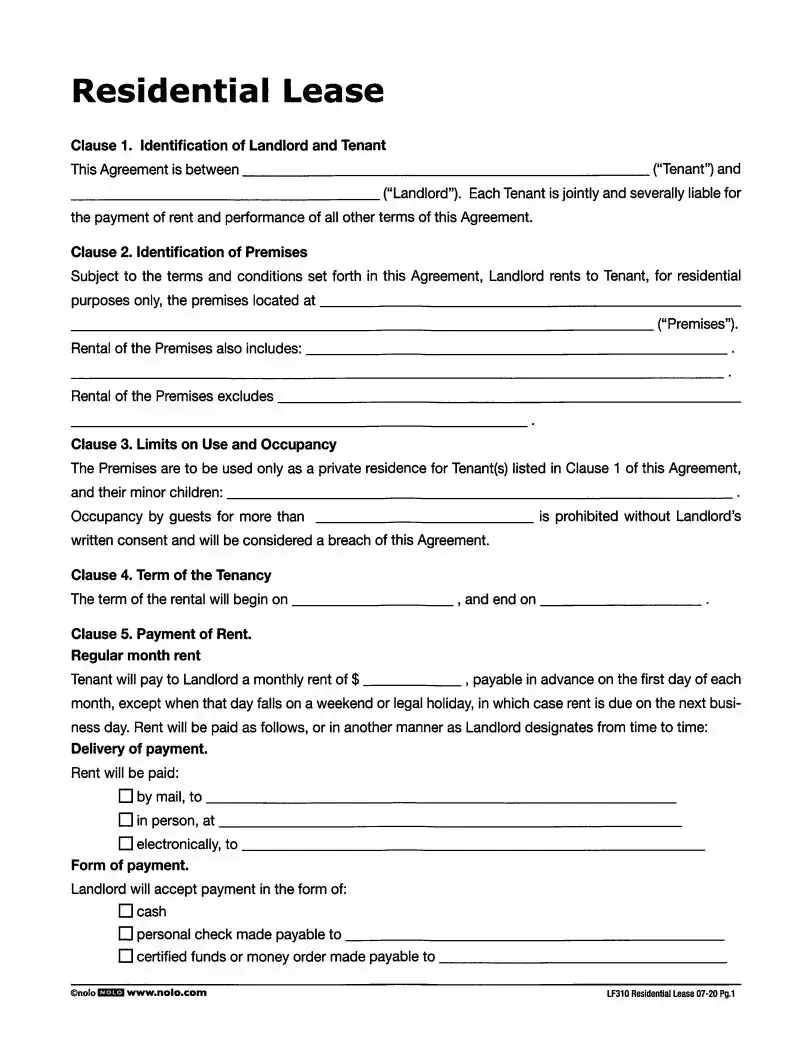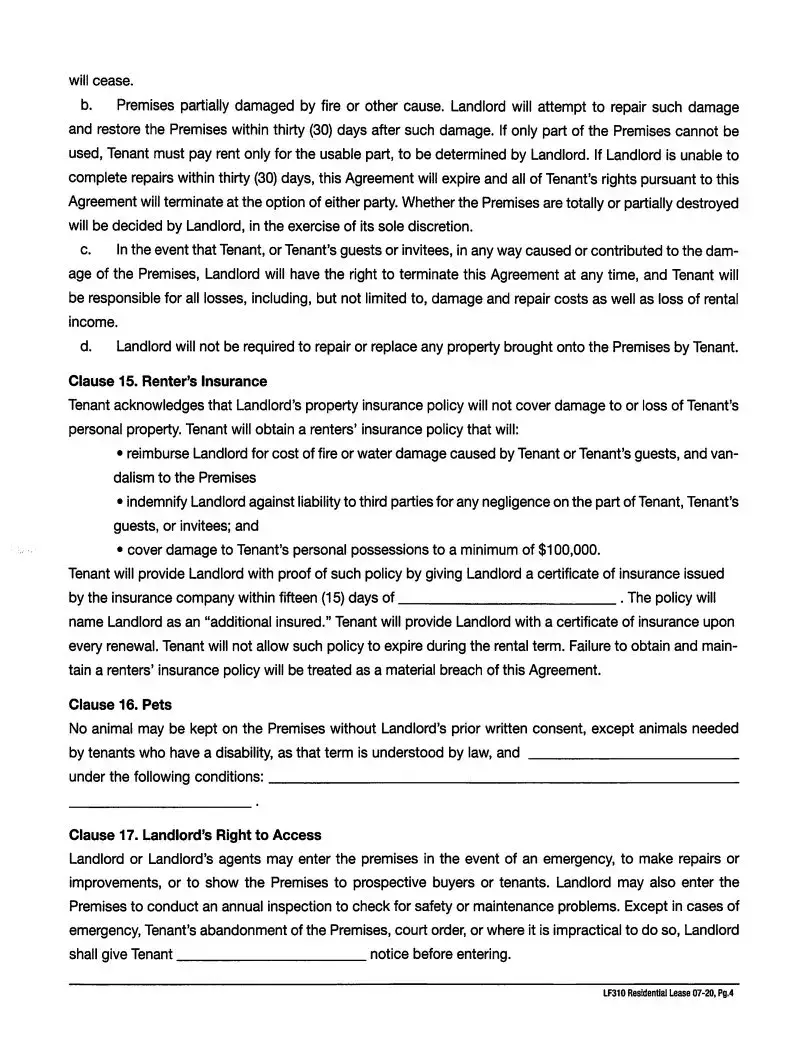The Lf310 Residential Lease form is a legal document that outlines the terms and conditions of renting a residential property. It serves as a contract between the landlord and tenant, detailing responsibilities, rights, and obligations of both parties. This form is designed to protect the interests of both the landlord and the tenant while ensuring a clear understanding of the rental agreement.
Who are the parties involved in the lease?
The lease identifies two main parties: the landlord and the tenant. The landlord is the property owner renting out the premises, while the tenant is the individual or individuals who will occupy the property. Importantly, all tenants listed in the agreement are jointly responsible for fulfilling the terms of the lease, including paying rent and adhering to other obligations.
What are the limits on use and occupancy of the premises?
The premises are strictly designated for residential use by the tenants named in the lease and their minor children. Guests may visit, but if they stay longer than agreed upon or without the landlord's consent, it could be considered a breach of the lease. This clause helps maintain the integrity of the rental agreement and ensures that the property is used as intended.
How is rent payment structured?
Rent is typically due on the first day of each month. If this day falls on a weekend or a holiday, the payment is expected on the next business day. Tenants must pay the agreed-upon monthly rent in advance, and the lease outlines acceptable payment methods, which may include cash, checks, electronic payments, or money orders. Additionally, when signing the lease, tenants may need to pay a prorated amount for the first month, depending on their move-in date.
What happens if rent is paid late?
If a tenant fails to pay rent on time, a late fee will be applied. The lease specifies a grace period after which the late charge kicks in. This fee is designed to compensate the landlord for the inconvenience caused by late payments. It’s important to note that the total late charge for any month will not exceed a certain amount, as outlined in the lease.
Are security deposits required?
Yes, tenants are required to pay a security deposit upon signing the lease. This deposit serves as a financial safeguard for the landlord against potential damages or unpaid rent. The lease specifies that tenants cannot use this deposit to cover the last month’s rent without the landlord's written consent. After the tenant vacates the premises, the landlord must return the deposit or provide an itemized statement of any deductions within a specified time frame.
Can tenants sublet the property?
Generally, tenants are not allowed to sublet the property or assign the lease without the landlord's prior written consent. This restriction helps the landlord maintain control over who occupies the premises and ensures that all residents adhere to the terms of the lease. Violating this clause can lead to termination of the tenancy, so it’s crucial for tenants to seek permission before making any arrangements to sublet.
